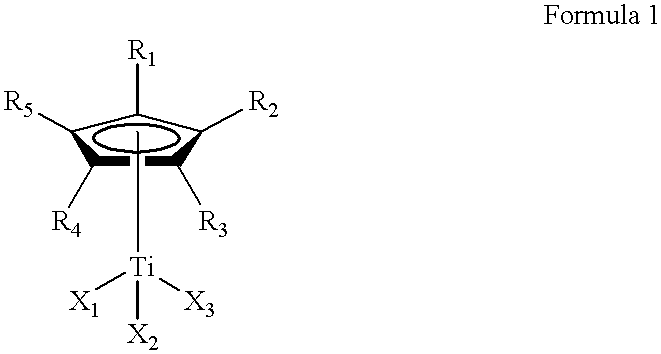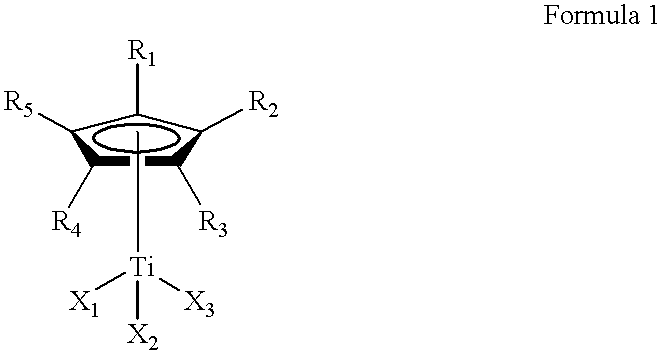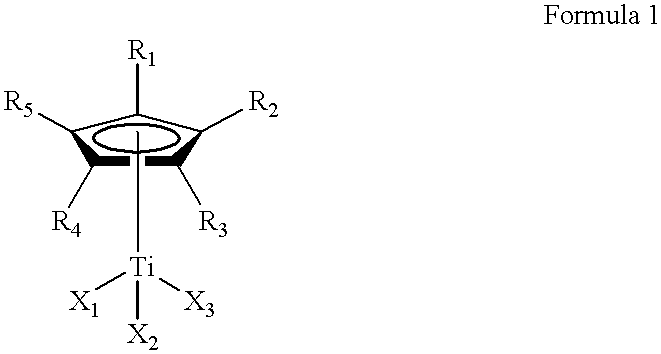Method for the selective hydrogenation of polymer containing conjugated diene
a technology of conjugated diene and hydrogenation method, which is applied in the field of selective hydrogenation of polymer containing conjugated diene, can solve the problems of poor weatherability and poor oxidation resistance of polymer, double bonding raises some adverse drawbacks, and the contact between reactants and catalysts is not easy to be made availabl
- Summary
- Abstract
- Description
- Claims
- Application Information
AI Technical Summary
Problems solved by technology
Method used
Image
Examples
examples 7
The hydrogenation was performed in the same manner as Example 1 using the polymers, so obtained from preparation 10.about.14, except for the fact that in the case of preparation 13 and 14, each amount of cyclopentadienyl titanium trichloride and lithium hydride was more increased two times than Example 1. The results were shown in the following table 2.
examples 12
A solution (2800 g) containing 400 g of polymer, so obtained from preparation 9 was placed in a 5 l autoclave reactor and stirred at 400 rpm at 60.degree. C. With well-controlled amount and molar ratio, both lithium hydride, so obtained from preparation 1 and catalyst, so obtained from preparation 2, were added to the polymer solution. The reactor was pressurized under 10 kg / cm.sup.2 of hydrogen to maintain the hydrogenation for 3 hours. After the reaction was completed, the reactor was cooled with its pressure reduced at atmospheric pressure. The resulting solution was added to methanol for precipitation of a hydrogenated polymer.
From .sup.1 H-NMR results of the hydrogenated polymer, so obtained, each hydrogenation rate of butadiene and styrene units was shown in the following table 3.
examples 17
The hydrogenation was performed using the polymer, so obtained from preparation 9 and pentamethylcyclopentadienyl titanium trichloride, so obtained from preparation 3, while controlling the amount and molar ratio of lithium hydride (LiH) in the same manner as Example 12.
From .sup.1 H-NMR results of the hydrogenated polymer, so obtained, each hydrogenation rate of butadiene and styrene units was shown in the following table 4.
PUM
| Property | Measurement | Unit |
|---|---|---|
| temperature | aaaaa | aaaaa |
| molar ratio | aaaaa | aaaaa |
| molar ratio | aaaaa | aaaaa |
Abstract
Description
Claims
Application Information
 Login to View More
Login to View More - R&D
- Intellectual Property
- Life Sciences
- Materials
- Tech Scout
- Unparalleled Data Quality
- Higher Quality Content
- 60% Fewer Hallucinations
Browse by: Latest US Patents, China's latest patents, Technical Efficacy Thesaurus, Application Domain, Technology Topic, Popular Technical Reports.
© 2025 PatSnap. All rights reserved.Legal|Privacy policy|Modern Slavery Act Transparency Statement|Sitemap|About US| Contact US: help@patsnap.com



